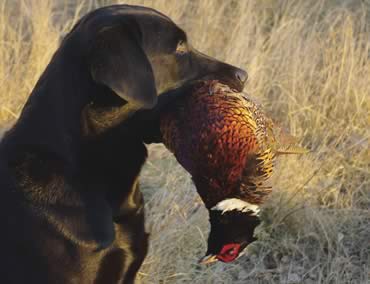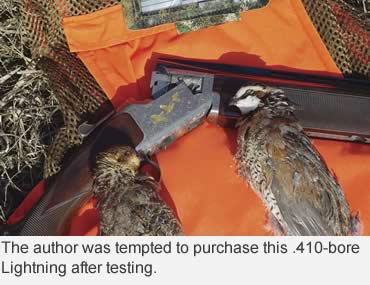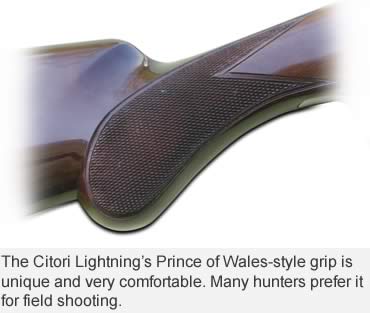A very high-quality shotgun for the price, the Browning Citori holds up to extensive shooting.
The Browning Citori over-and-under shotgun and its predecessor, the Superposed, are forever linked. Without the Superposed, the Citori would never have been born.
The Superposed was on the drawing board for several years before it was introduced in 1931. The wholesale price was $30 a gun. Thirty years later, a department store in my area was divesting itself of the gun business, offering Grade I Superposeds for $300, a real bargain. I wish I’d bought it, but I couldn’t scrape up $30 for a single barrel back then.
Superposed prices continued to escalate through the 1960s because of increasing labor costs in Belgium, but U.S. dollar devaluation also was a factor. Then there was the “salt wood debacle.”
Superposed sales remained fairly high in the mid-1960s, but Browning was having trouble finding large quantities of walnut for stocks. This was particularly true of wood for high grade models like the Pigeon, Pointer, Diana and Midas.
Eventually, a large quantity of Claro walnut was located in California. The quality of this wood was excellent. Browning ordered the wood and began a kiln drying process that if even slightly overdone, would cause cracks to appear.
To help solve this problem, Browning bought a drying process from Morton Salt Co. that reduced the drying time. Morton had successfully used this process with furniture wood, and Browning conducted its own tests to ensure there were no problems.
Satisfied, Browning covered the stacked planks with salt. The idea was that the salt would leach out moisture in the wood to dry it more quickly.
But guess what happens when salt in wood touches metal? An estimated 90 percent of the Superposed shotguns produced from 1967 and 1969 had corrosion problems related to the salt.
The Superposed had a lifetime warranty, so any original owner could return the gun to Browning for restocking. The cost of doing this had to be immense.
In 1969, Superposed sales had topped 13,000, but fell to 10,500 in 1970, a decline of about 25 percent. Sales were down by 50 percent two years later. Meanwhile, prices of Superposeds were climbing. Labor costs kept escalating, and the value of the U.S. dollar kept falling. Sound familiar?
The dagger to the heart of the Superposed was a four-month strike at Fabrique Nationale in 1973.
In 1972, Browning imported its first shotgun from Japan, the BSS, an acronym for Browning Side by Side. So with all the salt wood problems, increasing Superposed prices, declining sales, rising labor costs, devaluation of the dollar, coupled with the discovery of how good Japanese workmanship was in the BSS, the Citori was born.
The new gun was a very close cousin of the Superposed. Both rely on the huge, strong hinge pin upon which the barrel pivots, as well as a large underlocking bolt. Upon closing, it moves forward to engage a massive lug in the bottom of the barrels. As the gun is shot extensively, the underlocking bolt self-adjusts to continue to keep the action solid and tight.
 The cost of a Citori was very low in 1973: $325 compared to $735 for the Superposed that same year. By 1976, the Superposed was up to $1,100. However, in those years, goods made in Japan were considered inferior to those produced in other parts of the world. Since the Citori’s price was less than half the Superposed’s, it furthered the idea that Citori quality was inferior.
The cost of a Citori was very low in 1973: $325 compared to $735 for the Superposed that same year. By 1976, the Superposed was up to $1,100. However, in those years, goods made in Japan were considered inferior to those produced in other parts of the world. Since the Citori’s price was less than half the Superposed’s, it furthered the idea that Citori quality was inferior.
Time has proven that is certainly not the case.
The Citori is a very high-quality shotgun for the price, and they hold up extremely well, no matter how much they are shot.
In 2008, Browning sold its 1 millionth Citori. That same year, I visited the factory in Japan where the Citori and several other Browning firearms are made.
Two things were most impressive on that tour. First was the high quality of workmanship that goes into these guns. There are no shortcuts taken. For the most part, the Citori is handmade. Second to impress was how fast the Japanese worked, performing very specialized and intricate tasks.
Over the years, the Citori evolved into many different configurations, all based on the already described action.
Perhaps the best selling and most appealing Citori is the Lightning model.
Interestingly, there was a Superposed Lightning, and from it the Citori borrowed the rounded style of fore-end and pistol grip still used today. Many hunters prefer the feel of this more open grip. It is reminiscent of the Prince of Wales grip used on classic side-by-side shotguns popular in England for more than a century.
The Lightning model is the least expensive Citori, and, to my eye, the most elegant.
Over the years, there has been a number of Trap model Citoris. The one that has survived to this day is the Citori XT Trap. Featuring an elevated rib, it is offered with either a trap stock or one with an adjustable comb.
Skeet shooters have not been forgotten, despite the fact that sales of sporting clays shotguns have been better for many years. The current Citori skeet gun, the XS Skeet model with finger groove fore-end, is excellent. It’s offered in 12 and 20 gauge with 28- or 30-inch barrels. There’s also an XS Skeet with an adjustable comb. All come with backbored barrels, lengthened forcing cones and screw-in chokes.
 One of the early and successful Citori sporting clays models was the 325. Initially, it was sold only in Europe. USA-based sporting clays enthusiasts who went to Europe started bringing the 325 back with them. If I had to put my finger on why so many were impressed with the 325, it would be its dynamic feel.
One of the early and successful Citori sporting clays models was the 325. Initially, it was sold only in Europe. USA-based sporting clays enthusiasts who went to Europe started bringing the 325 back with them. If I had to put my finger on why so many were impressed with the 325, it would be its dynamic feel.
Browning’s Paul Thompson once told me he thought the 325’s barrels were a bit lighter, which explains the gun’s improved dynamics. So many 325s were brought back from Europe that Browning began offering this model in the U.S.
That lasted only a relatively short time because Browning updated the 325 with its next model aimed at sporting clays shooters — the 425, introduced in 1995.
The 425 had a fresh engraving pattern. More significant was the monobloc construction, a first for the Citori. Miroku, the Japanese company that makes the Citori and other Browning guns, must have had enough of these barrels in stock to include that type of barrel construction until 1998, when all Citori models were made that way.
Superposed shotguns were of “chopper lump” construction, meaning the barrels and chambers are made from a single piece of steel. Most of today’s over-and-unders feature barrels and chambers made from different chunks of steel.
The next sporting clays model was the 525, introduced in 2002. Features included a crisper redesigned trigger with less overtravel, a more pronounced pistol grip with palm swell, and slim line barrels for less weight. The 525 was also supplied with five Midas Grade extended Invector Plus choke tubes.
Today’s specialty Citori sporting model is the 625. First there was a Field version, followed by the Sporting model. The 625 features Vector Pro lengthened forcing cones to go with the overbored barrels and ported Diamond Grade Invector Plus screw-in chokes.
 The sporting clays guns previously mentioned were not the only ones Browning made. Earlier models included the Golden Clays, Ultra, Grand Lightning, Grand Prix Sporter and others.
The sporting clays guns previously mentioned were not the only ones Browning made. Earlier models included the Golden Clays, Ultra, Grand Lightning, Grand Prix Sporter and others.
More recently, the 25 series of sporting OUs have made Browning a name to be reckoned with in top sporting clays circles.
In addition to the standard Lightning model with engraved and blued receiver, there is the White Lightning, the same Citori overall but with a bright nitride receiver for extra corrosion protection. I’ve always thought bright receivers show off engraving better, but I’m still stuck on the blued Lightning receiver.
I’ve been asking Browning for several years to bring out the standard Lightning with a 30-inch barrel. I think it would be a hit with sporting clays enthusiasts and hunters. Sporting clays has showed that longer barrels can be beneficial to wingshooting. Skeet shooters went from 26- to 28-inch barrels in the 1970s and 1980s, but in recent years switched to 30-inch barrels, some even to 32-inchers.
Browning has always offered the Citori in high grades. Early on, there were the Grade III and Grade VI. New engraving patterns on these special Citoris have changed that Roman numeral designation to Grade IV and Grade VII.
The engraving is intricate with game birds in hunting scenes, all hand-chased to finish. The Grade VII, like the Grade VI, features golden birds in the engraving.
I recently returned a .410 Grade VII Lightning to Browning. It was a beautiful gun and I sincerely considered buying it, but I’m at the point in life where I’m selling shotguns rather than acquiring them.
No Citori discussion would be complete without mention of the BT-99, which trap shooters have bought by the scores. In addition to having a single barrel, the gun has no ejectors.
Of course, all a trap shooter needs is the extractor, as most trap buffs save their empties for reloading. The BT-99 is without question an extremely popular gun.
Read Recent GunHunter Articles:
• Field Shooting Effectively: When your target of opportunity knocks, you need to answer in seconds.
• Sauer’s Elegant 303: The 303 is a masterpiece of metal machining.
This article was first printed in the July 2011 edition of Buckmasters GunHunter Magazine. Subscribe today to have GunHunter delivered to your home.